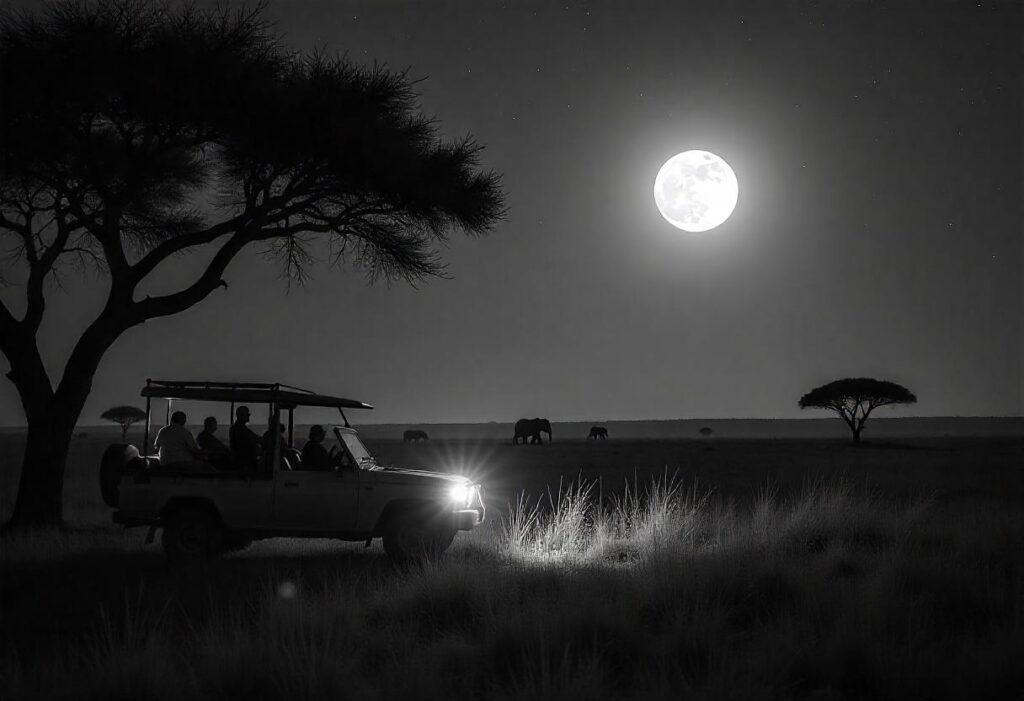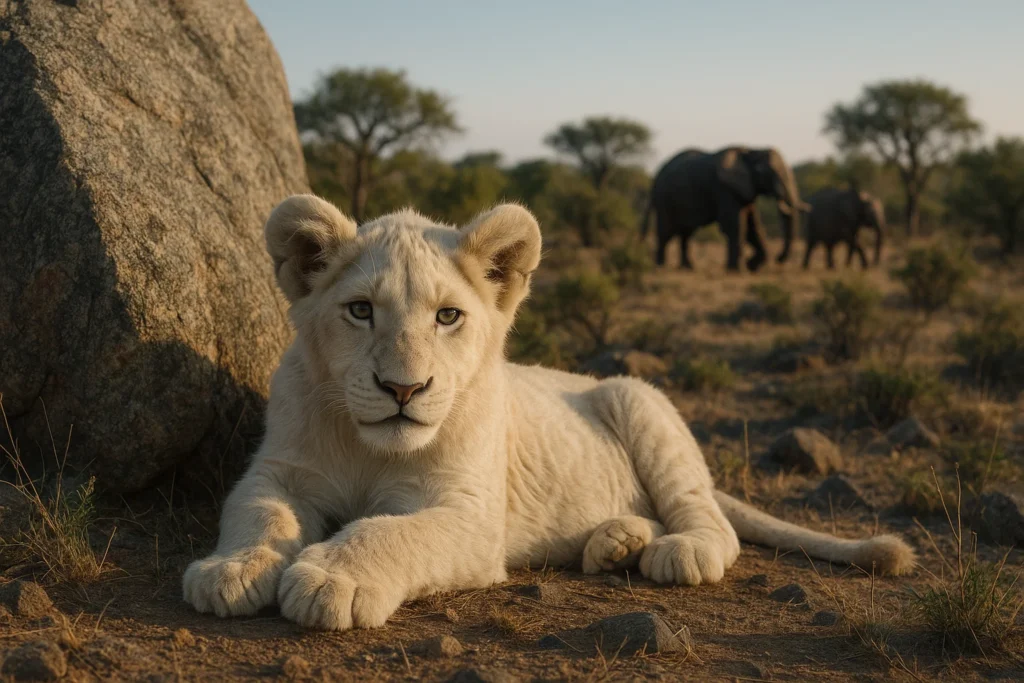Night safaris offer a completely different perspective on the African wilderness. When the sun dips below the horizon, a new world awakens—a world that’s wild, mysterious, and pulsing with nocturnal life. But what exactly happens on a night safari? What animals are active after dark? And how should you prepare for this unique experience? Let’s dive into the essentials of exploring the African bush at night.
A night safari is a guided wildlife drive or walk that takes place after sunset. Using spotlights or red-filtered lamps, experienced rangers search for nocturnal animals as they roam under the cover of darkness. Night safaris are typically offered in private reserves and some national parks with special permits.
These after-dark adventures provide rare insights into animal behavior that you simply won’t see during the day—think prowling predators, glowing eyes in the bush, and haunting nocturnal calls.
Why go on a night safari?
A different cast of wildlife
The African bush transforms completely at night. Diurnal animals settle in, and a new cast of creatures emerges:
- Predators like leopards, hyenas, and lions become more active
- Nocturnal herbivores such as bush babies and springhares appear
- Smaller creatures—genets, porcupines, civets—often overlooked during the day come into view
Unique atmosphere
There’s a special kind of magic to the bush at night. The darkness sharpens your senses. Sounds become louder, movements more mysterious. The quiet thrill of hearing a lion’s roar in the dark or seeing a leopard slip past your vehicle is unforgettable.
What to expect on your first night safari
How it works
- Start time: Shortly after sunset
- Duration: Typically 1.5–3 hours
- Mode: Open 4×4 vehicle with a spotlight or walking with an armed guide (less common)
- Gear: You’ll be provided with a spotlight or one will be operated by the guide
Safety first
Night safaris are safe when guided by trained professionals. Rangers are experts in spotting and reading animal behavior. Always follow their instructions—especially when lights are involved. Flashing or direct white light can startle animals or ruin a sighting.
Tips for enjoying your night safari
1. Dress appropriately
Evenings can get chilly. Bring layers, and consider a scarf or beanie during the colder months.
2. Stay quiet and alert
Sound carries far at night. Whisper, avoid sudden movements, and keep your ears open—you’ll hear owls, hyenas, and the rustle of nocturnal animals.
3. Bring binoculars with night vision (if available)
While not essential, binoculars that perform well in low light can enhance the experience, especially for spotting animals in the trees or at a distance.
4. Use a red light if you must
If you’re bringing your own flashlight or headlamp, use a red filter—it’s less disruptive to wildlife and won’t ruin your night vision.
Where to go for the best night safaris
Not all parks allow night drives, so it’s important to choose the right destination. Here are a few top picks:
- South Luangwa, Zambia – Known for regular leopard sightings at night
- Greater Kruger, South Africa – Private reserves like Sabi Sands offer excellent nocturnal safaris
- Masai Mara conservancies, Kenya – Night drives are permitted in private concessions
- Okavango Delta, Botswana – Spotlights reveal everything from aardwolves to civets
Final thoughts: Is a night safari worth it?
Absolutely. A night safari adds depth, excitement, and contrast to your safari itinerary. It’s your chance to experience the bush as few do—to witness the raw and often unseen drama of African wildlife under the cover of darkness.
If you’re after the full safari experience, don’t stop when the sun goes down.
Frequently asked questions about night safaris
While night safaris can be thrilling for families, some lodges have age restrictions for safety reasons. It’s best to check with the specific lodge or reserve. In general, children over the age of 6–8 are usually allowed, especially in private vehicles.
Night walking safaris are rare and only conducted in specific locations under strict safety protocols. They are typically reserved for experienced travelers or offered as short walks around camp with armed guides.
Not always. Many safari packages focus on morning and afternoon game drives. Night drives are often offered as an optional add-on, especially in private reserves. Be sure to check in advance if this is a priority for you.
Night safaris can be done year-round, but the dry season (typically June to October) offers better visibility and increased chances of spotting predators. During the rainy season, some areas may reduce or cancel night activities due to safety concerns or road conditions.
Yes. Many predators are more active and successful at hunting under cover of darkness. Herbivores tend to be more alert, and many smaller animals only emerge after dark to avoid daytime predators.
When conducted by trained guides using proper lighting techniques and keeping a respectful distance, night safaris are considered ethical. Disruptive behavior (like shining lights directly into animals’ eyes or chasing them) is strictly avoided by reputable operators.
It’s possible, but challenging. You’ll need a camera with good low-light capability and fast lenses. Flash photography is generally discouraged as it can disturb wildlife—stick to high ISO settings and fast shutter speeds instead.






